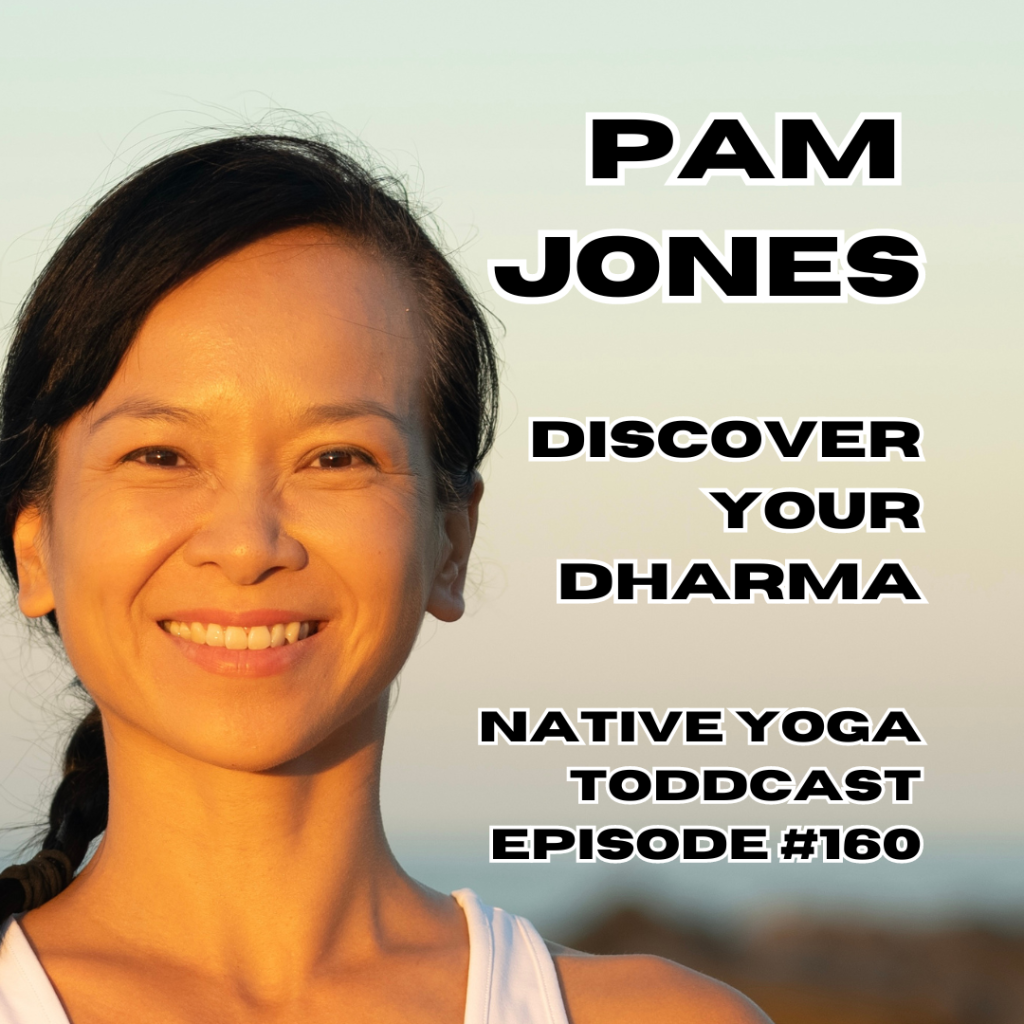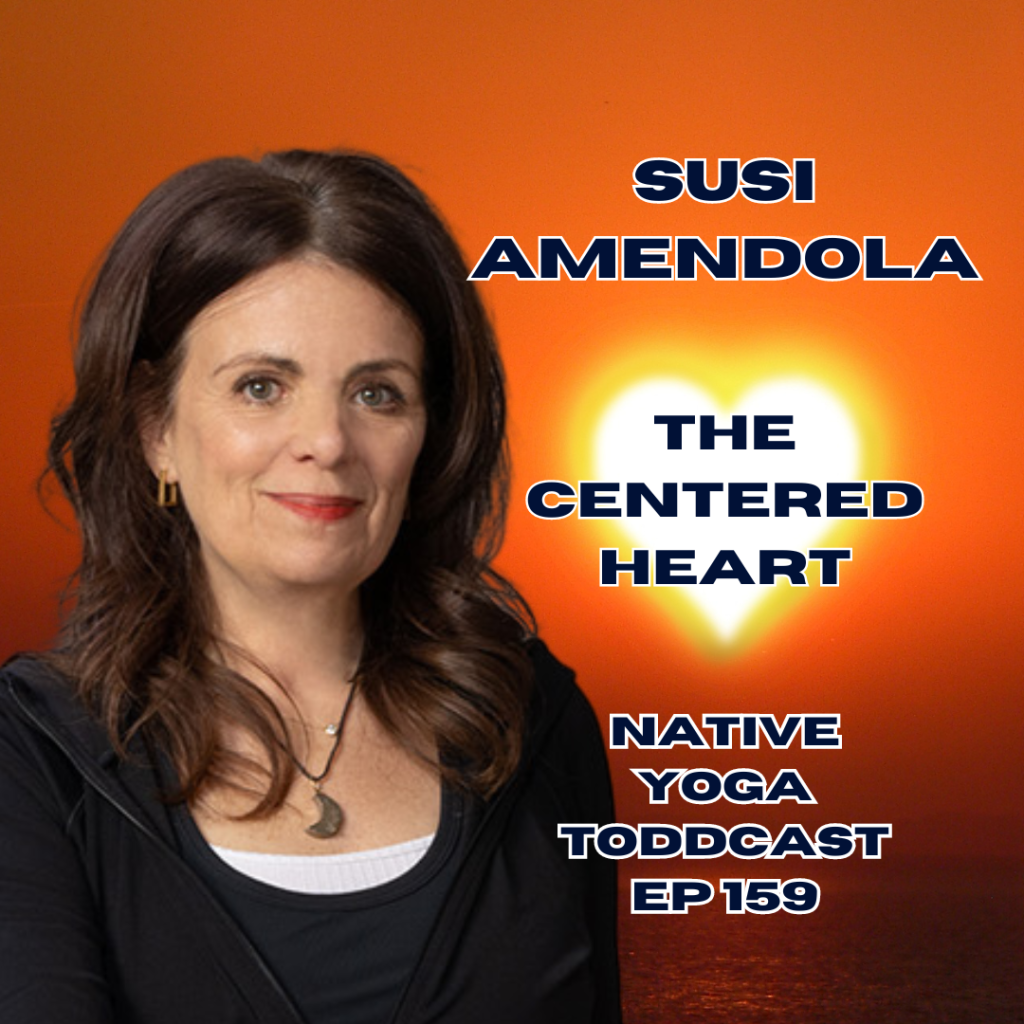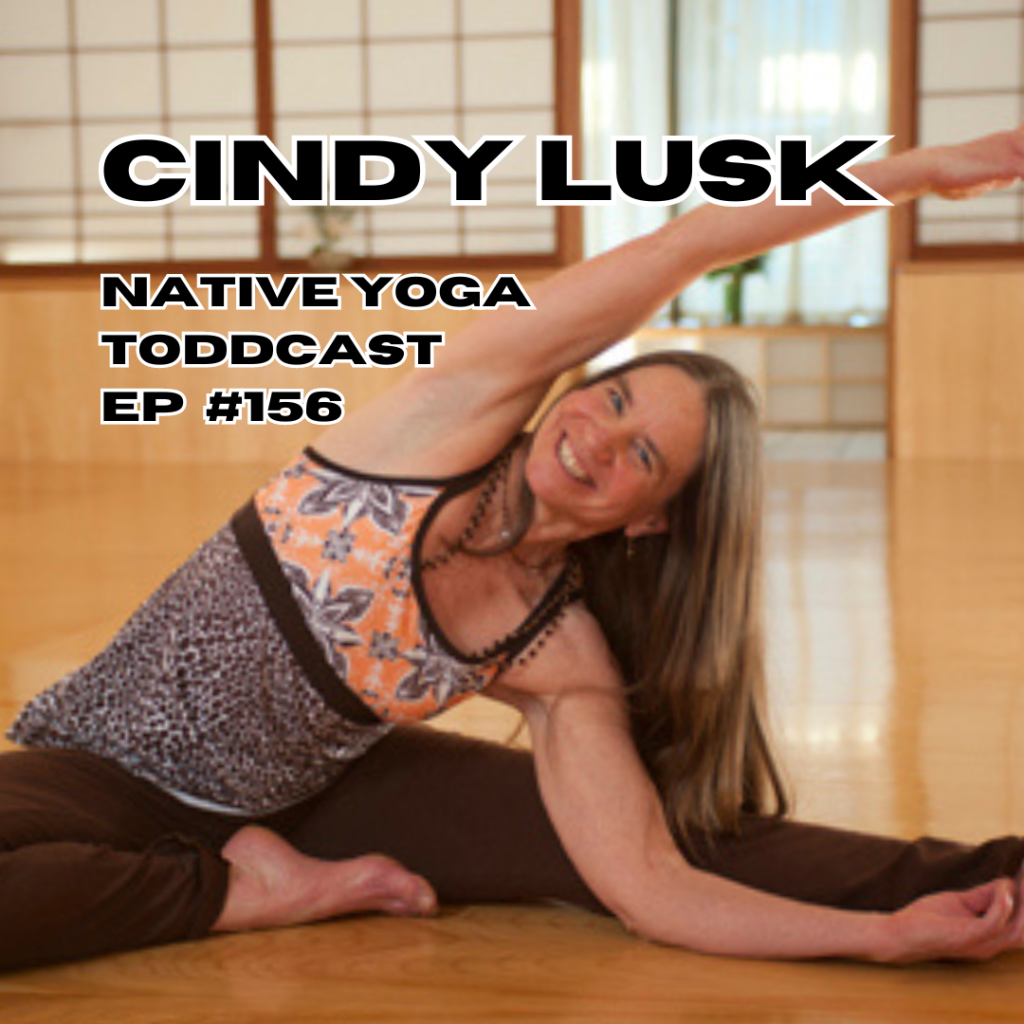
Listen to Podcast with Pam for FREE Here
Pam Jones is a yoga teacher and trained Ayurvedic chef. Originally from London, she now resides in Florida. Pam studies under Sri Dharma Mittra and is passionate about sharing her love for yoga with the global community. She is also a certified Ayurvedic nutritionist and enjoys preparing food as a therapeutic and meditative practice.
Visit Pam’s website and socials at karmacoco.com.
Key Takeaways:
- Yoga is a moving meditation and a way to connect with the divine.
- Understanding our dosha can help us make dietary choices that support our well-being.
- Practicing concentration and visualization techniques can help develop psychic energy.
- Death meditation can help us reflect on what is truly important in life.
- Being kind and compassionate to ourselves and others is essential for a fulfilling life.
“Kindness and compassion are the keys to living a fulfilling life.” – Pam Jones
Native Yoga Toddcast: A Journey of Yoga and Self-Realization
Introduction
Welcome to the Native Yoga Toddcast, where inspirational speakers in the field of yoga, massage, bodywork, and beyond share their wisdom and experiences. In this episode, we have the pleasure of hearing from Pam Jones, a dedicated yoga teacher and Ayurvedic chef who studied under the renowned Sri Dharma Mittra. Pam takes us on her journey from growing up in London to finding her way to New York City, where she discovered her passion for yoga and self-realization. Through her website, karmacoco.com, Pam shares her love for yoga with the global community. Join us as we delve into her story and the insights she has gained along the way.
Key Takeaways
- Pam’s journey from dance to fashion design led her to a search for something more fulfilling, which eventually led her to yoga and the teachings of Sri Dharma Mittra.
- The practice of yoga goes beyond the physical asanas, offering a connection to something greater and a path to self-realization.
- Pam emphasizes the importance of practicing Ahimsa, non-violence, in all aspects of life, including our diet and treatment of all beings.
Exploring the Journey
Pam’s journey into yoga began with a search for something more fulfilling than her previous pursuits in dance and fashion design. She found herself questioning the meaning and purpose of her life, and it was during this time that she discovered yoga. Attending a class at JivaMukti Yoga in London, Pam felt an immediate connection and resonance with the practice. The sequencing and philosophy of the class spoke to her, and she knew she had found her tribe.
It was through her teachers at JivaMukti that Pam first heard of Sri Dharma Mittra. Intrigued by their praise of him as a true master, she decided to travel to New York City to meet him. From the moment she met Sri Dharma, Pam felt a profound sense of humility and devotion emanating from him. His teachings and presence resonated deeply with her, and she knew she had found her teacher.
The Power of Asana and Philosophy
In the beginning, Pam was drawn to the physical aspect of yoga, particularly the asanas. As a dancer, she loved the movement and the challenge of the poses. However, as she continued her practice and delved deeper into the philosophy of yoga, she realized that there was so much more to it than just the physical postures.
Pam describes yoga as a moving meditation, a way to connect with the divine and to go beyond the limitations of the body and mind. Sri Dharma Mittra’s teachings emphasized the idea that all poses are offerings to God, and that the practice of yoga is a way to move beyond the ego and connect with something greater. This shift in perspective allowed Pam to experience a deeper sense of self and a greater connection to the world around her.
The Importance of Diet and Ahimsa
As a trained Ayurvedic chef, Pam understands the importance of diet in maintaining balance and harmony in the body and mind. She follows a vegan diet, not only for health reasons but also as a way to practice Ahimsa, non-violence, towards all beings. Pam believes that all beings love life and fear violence, and it is our responsibility to extend compassion and kindness to all creatures.
In Ayurveda, each person has a unique constitution, or dosha, which determines their physical and mental characteristics. Pam identifies as a Pitta-Kapha type, with a balance of fire and water elements. She emphasizes the importance of eating foods that balance her dosha and support her overall well-being. By nourishing her body with the right foods, she is able to maintain a sense of vitality and energy.
Embracing Impermanence and Self-Realization
One of the key lessons Pam has learned through her yoga practice is the impermanence of life. The realization that everything is constantly changing and that we are not defined by our physical bodies has allowed her to let go of attachments and embrace the present moment. She encourages others to do the same, to live each day as if it were their last and to focus on what truly matters in life.
Pam also emphasizes the importance of self-realization, the process of peeling away the layers of conditioning and discovering our true nature. Through yoga and meditation, we can connect with our inner divinity and find a sense of peace and fulfillment that is not dependent on external circumstances. This journey of self-discovery is ongoing and requires dedication and practice, but the rewards are immeasurable.
Conclusion
Pam Jones’s journey from London to New York City and her discovery of yoga and self-realization is an inspiring testament to the transformative power of the practice. Through her experiences, she has learned the importance of embracing impermanence, practicing Ahimsa, and cultivating a deep connection to oneself and the world around us. As we navigate our own journeys, let us remember the wisdom shared by Pam and strive to live each day with kindness, compassion, and a commitment to self-realization.
Thanks for listening to this episode. Check out: 👇
Free Grow Your Yoga Live Webinar – Every Thursday at 12pm EST
➡️ Click here to receive link
New Student FREE Livestream Yoga Special ~ Try 2 Weeks of Free Unlimited Livestream Yoga Classes at Native Yoga Center. info.nativeyogacenter.com/livestream Sign into the classes you would like to take and you will receive an email 30 minutes prior to join on Zoom. The class is recorded and uploaded to nativeyogaonline.com ➡️ Click Here to Join.
Practice to a New Yoga Class every day with our nativeyogaonline.com course called Today’s Community Class with code FIRSTMONTHFREE.
Native Yoga Teacher Training 2024– In Studio and Livestream – for info delivered to your email click this link here: ➡️ https://info.nativeyogacenter.com/native-yoga-teacher-training-2023/
Subscribe to Native Yoga Center and view this podcast on Youtube.
Thank you Bryce Allyn for the show tunes. Check out Bryce’s website: bryceallynband.comand sign up on his newsletter to stay in touch. Listen here to his original music from his bands Boxelder, B-Liminal and Bryce Allyn Band on Spotify.
Please email special requests and feedback to info@nativeyogacenter.comSupport the show
Native Yoga website: here
YouTube: here
Instagram: @nativeyoga
Twitter: @nativeyoga
Facebook: @nativeyogacenter
LinkedIn: Todd McLaughlin









